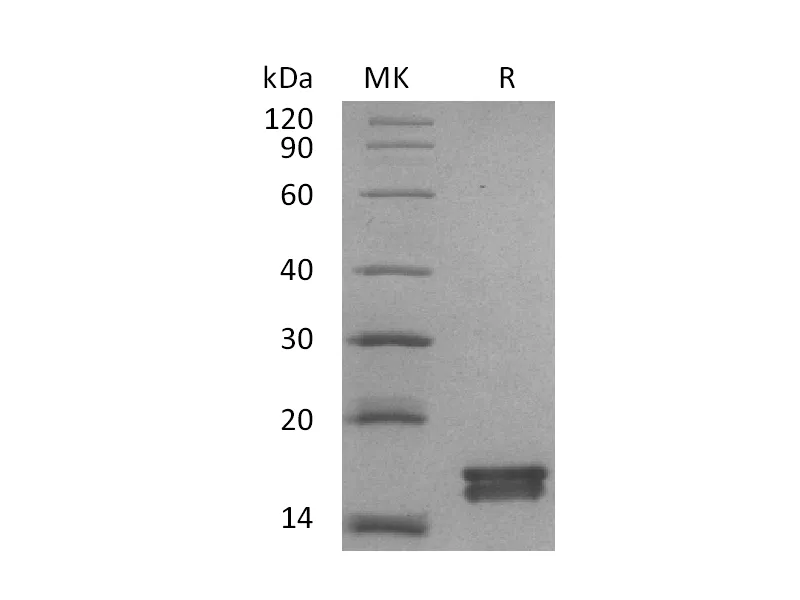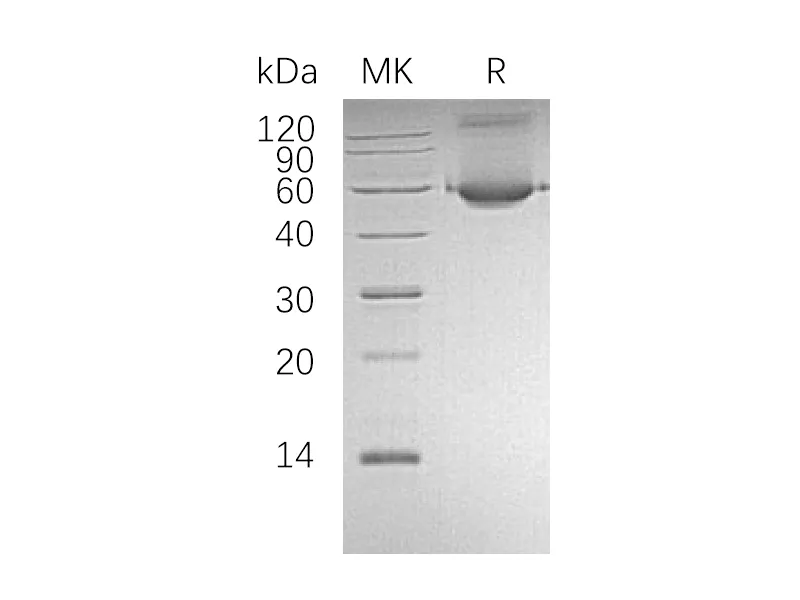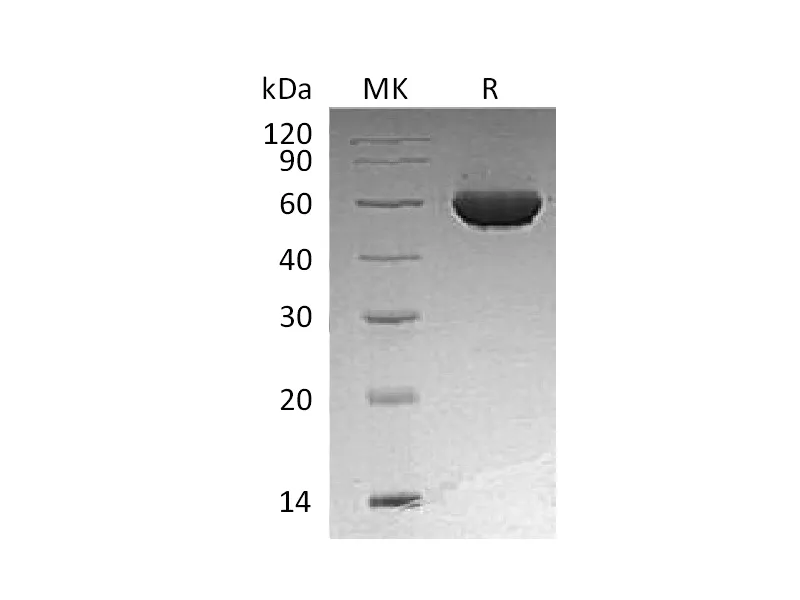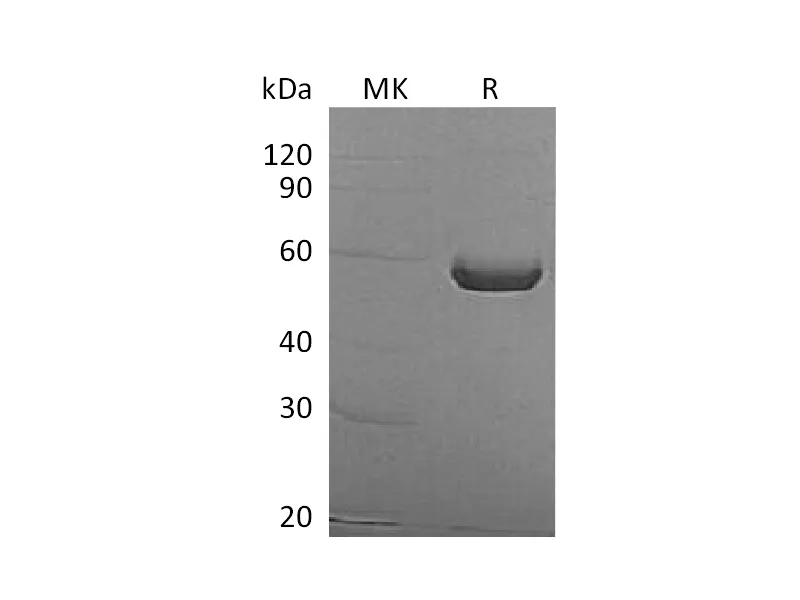Alternative Names
Myelin-Associated Glycoprotein; Siglec-4a; MAG; GMA
Background
Human Myelin-Associated Glycoprotein,also known as MAG, Siglec-4,is a cell membrane glycoprotein that is a member of the SIGLEC family of proteins.MAG contains 4 Ig-like C2-type domains and 1 Ig-like V-type domain.MAG functions as an adhesion molecule during neural development. MAG is believed to be involved in myelination during nerve regeneration. it is a adhesion molecule in postnatal neural development that mediates sialic-acid dependent cell-cell interactions between neuronal and myelinating cells and Preferentially binds to alpha-2,3-linked sialic acid. Soluble MAG, which is released from myelin in large quantities, has been identified in normal human tissues and in tissues from patients with neurological disorders. It is believed that this soluble MAG might contribute to the lack of CNS neuron regeneration after injury.
Note
For Research Use Only , Not for Diagnostic Use.




